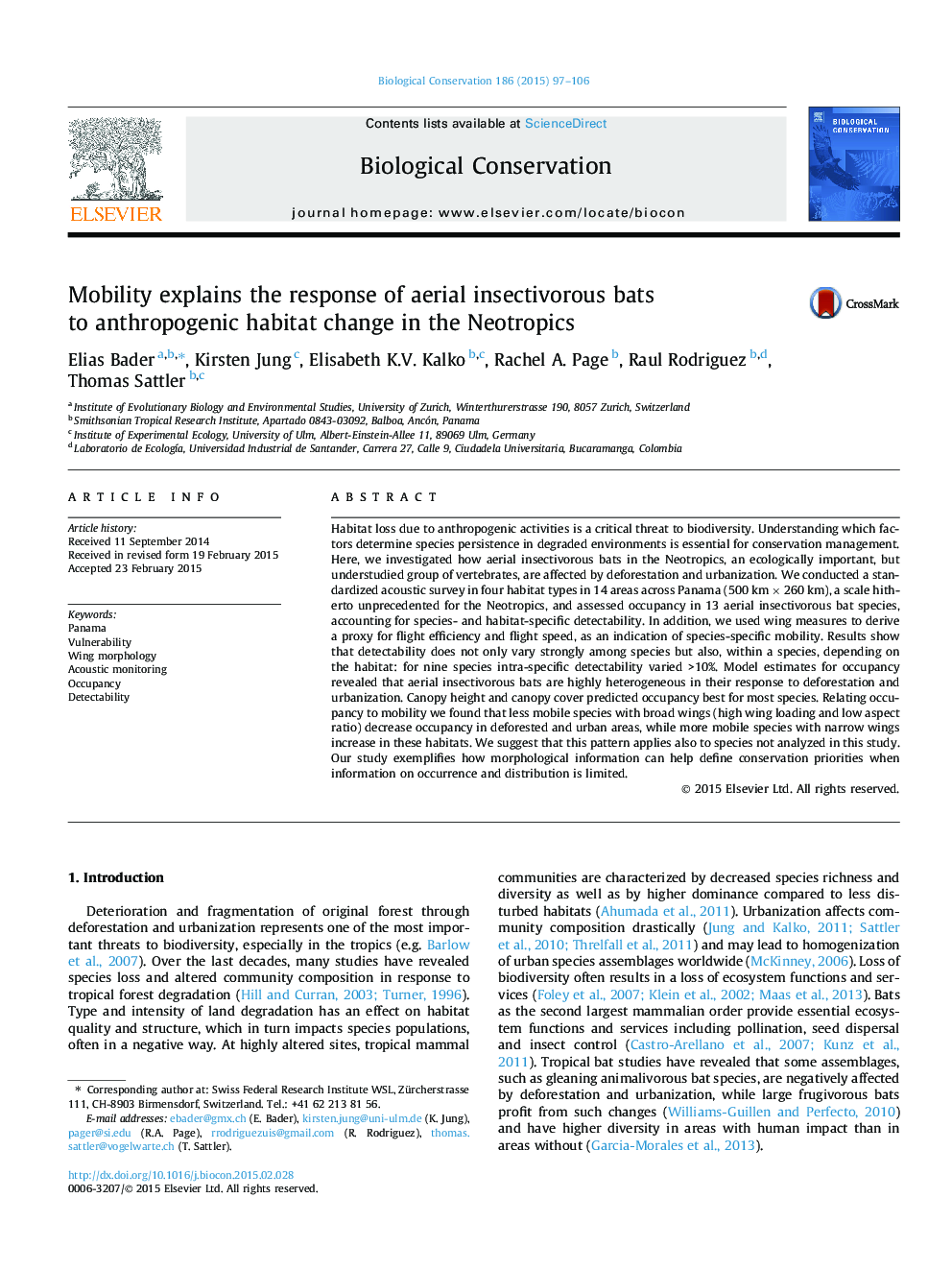| کد مقاله | کد نشریه | سال انتشار | مقاله انگلیسی | نسخه تمام متن |
|---|---|---|---|---|
| 6299679 | 1617915 | 2015 | 10 صفحه PDF | دانلود رایگان |
عنوان انگلیسی مقاله ISI
Mobility explains the response of aerial insectivorous bats to anthropogenic habitat change in the Neotropics
دانلود مقاله + سفارش ترجمه
دانلود مقاله ISI انگلیسی
رایگان برای ایرانیان
کلمات کلیدی
موضوعات مرتبط
علوم زیستی و بیوفناوری
علوم کشاورزی و بیولوژیک
بوم شناسی، تکامل، رفتار و سامانه شناسی
پیش نمایش صفحه اول مقاله

چکیده انگلیسی
Habitat loss due to anthropogenic activities is a critical threat to biodiversity. Understanding which factors determine species persistence in degraded environments is essential for conservation management. Here, we investigated how aerial insectivorous bats in the Neotropics, an ecologically important, but understudied group of vertebrates, are affected by deforestation and urbanization. We conducted a standardized acoustic survey in four habitat types in 14 areas across Panama (500 km Ã 260 km), a scale hitherto unprecedented for the Neotropics, and assessed occupancy in 13 aerial insectivorous bat species, accounting for species- and habitat-specific detectability. In addition, we used wing measures to derive a proxy for flight efficiency and flight speed, as an indication of species-specific mobility. Results show that detectability does not only vary strongly among species but also, within a species, depending on the habitat: for nine species intra-specific detectability varied >10%. Model estimates for occupancy revealed that aerial insectivorous bats are highly heterogeneous in their response to deforestation and urbanization. Canopy height and canopy cover predicted occupancy best for most species. Relating occupancy to mobility we found that less mobile species with broad wings (high wing loading and low aspect ratio) decrease occupancy in deforested and urban areas, while more mobile species with narrow wings increase in these habitats. We suggest that this pattern applies also to species not analyzed in this study. Our study exemplifies how morphological information can help define conservation priorities when information on occurrence and distribution is limited.
ناشر
Database: Elsevier - ScienceDirect (ساینس دایرکت)
Journal: Biological Conservation - Volume 186, June 2015, Pages 97-106
Journal: Biological Conservation - Volume 186, June 2015, Pages 97-106
نویسندگان
Elias Bader, Kirsten Jung, Elisabeth K.V. Kalko, Rachel A. Page, Raul Rodriguez, Thomas Sattler,